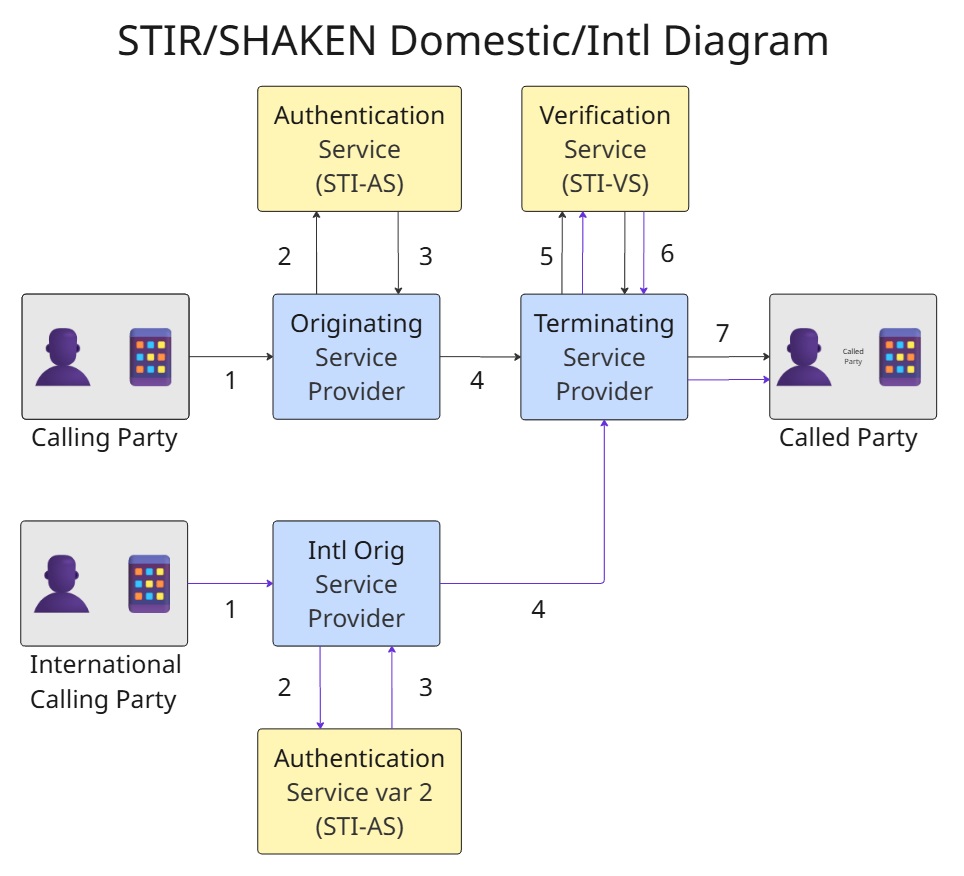Detailed Breakdown
The Problem:
After successfully deploying STIR/SHAKEN in the US and then a unique version in France, a critical strategic risk became clear: if every country created its own bespoke version of the standards, the complexity for global carriers would become an interoperability nightmare. Managing dozens of country-specific rules, certificate authorities, and policies would be unsustainable and stifle innovation.
The Opportunity:
This challenge presented a vital opportunity to be an industry leader and suggesting a preferred design of our own. We could prove that the fundamental IETF (Internet Engineering Task Force) and ATIS (Alliance for Telecommunications Industry Standards) specifications for STIR/SHAKEN were robust enough to work on a global scale, using international numbering and a non-jurisdictional Certificate Authority. A successful PoC would create a blueprint for a single, scalable global product, saving immense future development costs and complexity.
Target Persona:
This Proof of Concept was a collaboration externally, but the effort was strategic as there was a vested interest from our CTO with full resource support. Product, Legal, and Engineering were working toward confirming a scalable, long-term vision of STIR/SHAKEN for our global voice network was possible. Externally, our partners are all major brands who would encourage adoption among others in the industry.
Key Insights:
The core technical challenge wasn't the protocol itself, but the governance structure and unique requirements around it. By proposing a model with a non-jurisdictional Global Policy Administrator (G-PA) as well as a Global Certificate Authority (G-CA), we could decouple the technical standard from the country-specific regulatory whims, allowing for a truly interoperable global ecosystem.
Product Vision:
To prove that a single, standards-based STIR/SHAKEN implementation can function globally, creating the foundation for a unified product that simplifies compliance for international carriers and fosters a worldwide trusted voice network.
Strategic Roadmap:
The PoC was designed to be lean and focused.
• Align with key international carrier partners on testing parameters and success criteria.
• Execute a series of controlled tests using international E.164 numbers.
• Execute a series of controlled tests using non-jurisdictional certificates.
• Document and publish the results internally and share with partners.
• Gain critical mass support and then launch the ecosystem.
Solution:
The PoC utilized our existing US/Canada STIR/SHAKEN implementation as the testbed. By carving out a swim lane utilizing the same infrastructure but separate from live production traffic, we configured it to interact with a third-party Global Certificate Authority and initiated test calls using international numbering plans between our network and our partners' networks to validate that calls could be signed and verified correctly across borders.

Key Features:
The PoC focused on validating core technical capabilities:
• Successful call signing using a third-party, non-jurisdictional Certificate Authority.
• End-to-end call flow using global E.164 numbering.
• Cross-carrier verification of signatures between international partners.
• Documentation of results to prove interoperability success.
Process & Collaboration:
My role was to coordinate the entire effort as we had the global carrier network with the flexibility to set up this testbed. I worked with Engineering and the other founding members to define the testing parameters, collaborated with Sales to align the overall future-goals with our partners, and ensured the PoC's structure was sound from a legal and regulatory perspective. We executed the testing scenarios, documented every result, and created the final report that was shared with all participants.
Results & Impact:
Success! The PoC definitively proved that the existing ATIS and IETF specifications for STIR/SHAKEN worked perfectly with international numbering and a global Certificate Authority. This validated our hypothesis and provided the critical data needed to greenlight the development of a unified, global product, potentially saving millions in future one-off development costs and time. In addition, the ecosystem would be completely opt-in and would encourage governments around the globe to opt-in rather than start from scratch.
Reflection:
This project was a powerful lesson in proactive, strategic thinking. Instead of waiting for the interoperability problem to become unmanageable, we proved a more manageable path forward. We demonstrated that a well-designed PoC can effectively de-risk a major strategic initiative and build organizational alignment around a complex, long-term vision. It also showed that with the right posturing, a global service offering could easily be accepted into the existing ecosystem from a technical perspective.